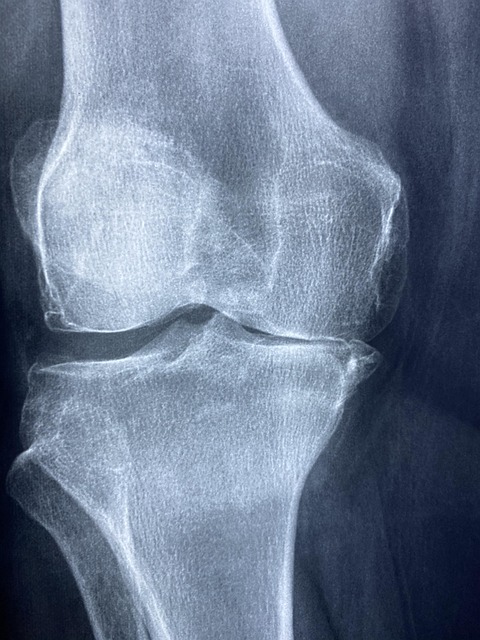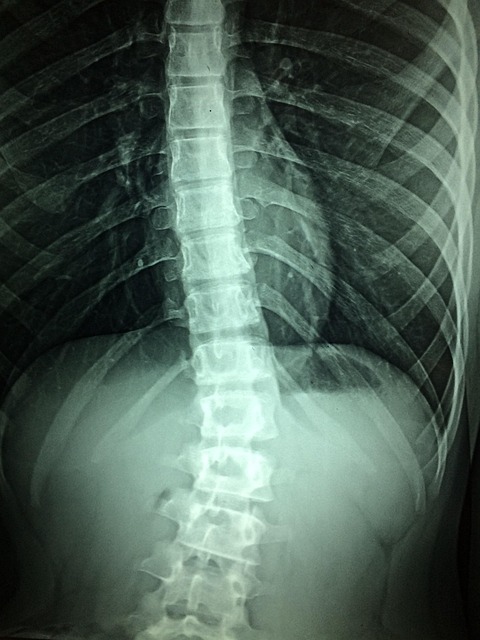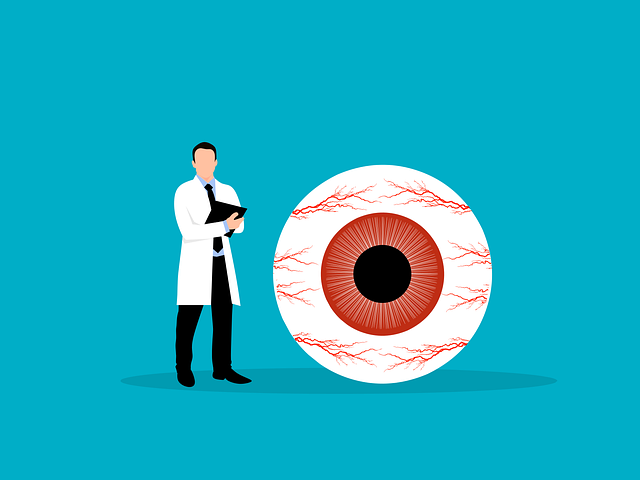Unveiling Cancer Early: Whole-Body Scan Insights

Whole-body cancer scans utilize CT, MRI, and PET imaging to detect metastatic cancer cells early, ai…….
In the relentless pursuit of defeating cancer, medical professionals and researchers have long relied on imaging technologies as powerful tools for early detection and diagnosis. Medical imaging for cancer diagnosis involves a suite of advanced techniques that enable visual representation of the body’s internal structures, aiding in the identification and characterization of abnormal growths or lesions. This article delves into the multifaceted world of cancer diagnosis through medical imaging, exploring its historical evolution, global impact, technological leaps, regulatory frameworks, and the challenges it faces. By the end, readers will grasp the critical role this field plays in transforming cancer care and improving patient survival rates worldwide.
Medical imaging for cancer diagnosis is a multidisciplinary field that harnesses various technologies to create detailed images of internal body structures. These images serve as visual guides for healthcare professionals, helping them identify and differentiate benign tumors from malignant ones. The core components include:
Imaging Modalities: These are the different types of medical imaging equipment used, each with unique capabilities. Common modalities include X-ray radiography, computed tomography (CT), magnetic resonance imaging (MRI), ultrasound, positron emission tomography (PET), and endoscopy. Each modality offers distinct advantages in terms of image quality, penetration depth, and tissue contrast.
Image Acquisition: This involves the process of capturing images using specialized equipment. For example, X-rays use high-energy radiation to create black-and-white images, while MRI scanners utilize strong magnetic fields and radio waves to generate detailed cross-sectional images of soft tissues.
Image Interpretation: Skilled radiologists or medical professionals analyze the acquired images to detect abnormalities, measure tumor size and location, and assess the extent of cancer spread. This step is crucial for establishing a definitive diagnosis and determining an appropriate treatment plan.
Historically, medical imaging for cancer diagnosis has evolved significantly since the 19th century when Röntgen discovered X-rays. The field gained momentum with advancements in computer technology, leading to the development of CT scans in the 1970s and MRI in the late 20th century. These breakthroughs revolutionized cancer detection by providing more detailed and comprehensive images than conventional X-ray radiography.
The impact of medical imaging for cancer diagnosis is not confined to any region; it is a global health initiative with profound effects on patient outcomes. Here’s an overview:
| Region | Impact and Trends |
|---|---|
| North America | The United States and Canada lead in medical imaging research, with robust funding from government agencies and private investors. Advanced imaging technologies like MRI and PET are widely available, contributing to improved cancer survival rates. |
| Europe | European countries have implemented comprehensive screening programs for specific cancers, such as breast and colorectal cancer, leveraging the benefits of advanced imaging. The European Union’s focus on healthcare interoperability facilitates the exchange of medical imaging data across borders. |
| Asia | Rapidly growing economies in Asia are witnessing a surge in medical tourism, attracting patients seeking cutting-edge imaging technologies. Countries like Japan and South Korea are at the forefront of developing hybrid imaging systems that combine multiple modalities for improved diagnosis. |
| Low-Middle Income Countries | Access to medical imaging remains a challenge in many developing regions. However, initiatives by global health organizations aim to bridge this gap through technology transfer, capacity building, and affordable imaging solutions. |
These trends highlight the global collaboration and efforts to make advanced cancer diagnostic tools more accessible worldwide.
The economic landscape of medical imaging for cancer diagnosis is complex, involving various stakeholders, market forces, and regulatory frameworks.
Market Size: According to a 2022 report by ResearchAndMarkets, the global medical imaging market size was valued at USD 38.7 billion in 2021 and is projected to grow at a CAGR of 6.5% from 2022 to 2030. This growth is primarily driven by the increasing prevalence of cancer, rising healthcare expenditure, and advancements in imaging technologies.
Key Players: Major players in this market include General Electric (GE), Siemens Healthineers, Canon Medical, Philips Healthcare, and Hologic. These companies invest heavily in research and development, driving innovation in medical imaging equipment and software.
Investment Patterns: The industry attracts significant investments from venture capital firms, private equity investors, and strategic partners. Startups focused on artificial intelligence (AI) and machine learning applications in medical imaging have garnered substantial funding in recent years.
Economic Impact: Medical imaging for cancer diagnosis contributes to economic growth through direct employment in manufacturing, research, and healthcare services. It also drives indirect job creation in related industries, such as software development and data analytics.
The field of medical imaging has witnessed a flurry of technological innovations that are reshaping cancer diagnosis and treatment:
Artificial Intelligence (AI) and Machine Learning: AI algorithms can analyze vast amounts of medical image data, identifying patterns and features indicative of cancerous growths. These technologies assist radiologists in interpreting images more accurately and efficiently. Deep learning models have shown promising results in detecting breast cancer from mammography images and identifying brain tumors from MRI scans.
Hybrid Imaging Systems: Combining multiple imaging modalities into one system allows for comprehensive assessment without the need for multiple procedures. For instance, a CT-PET scanner integrates computed tomography with positron emission tomography, providing detailed anatomical and functional information simultaneously.
Super-Resolution Imaging: This technique enhances the resolution of medical images, enabling better visualization of small lesions and subtle changes in tissue structure. It has potential applications in early cancer detection and monitoring treatment response.
Quantum Imaging: Quantum sensors offer improved sensitivity and precision, paving the way for more accurate and earlier cancer detection. These sensors can detect minute changes in magnetic fields caused by biological processes, providing valuable insights into tumor behavior.
Regulatory bodies worldwide play a crucial role in ensuring the safety, efficacy, and quality of medical imaging technologies.
Food and Drug Administration (FDA): In the United States, the FDA is responsible for regulating medical devices, including imaging equipment. It sets standards for pre-market approval, labeling, and post-market surveillance.
European Medicines Agency (EMA): The EMA regulates medical devices in European countries, ensuring they meet safety and performance requirements before being marketed.
International Organization for Standardization (ISO): ISO develops international standards for medical imaging equipment, covering aspects such as image quality, patient safety, and compatibility with other systems.
National Regulatory Authorities: Many countries have their own regulatory bodies that oversee the implementation of medical imaging technologies within their healthcare systems.
Despite significant achievements, medical imaging for cancer diagnosis faces several challenges:
Cost and Accessibility: High-end imaging technologies remain expensive, limiting access in resource-constrained settings. Efforts to develop affordable alternatives and improve global healthcare infrastructure are essential.
Interpreting Image Data: Radiologists face the challenge of interpreting complex image data accurately. AI-assisted diagnosis can help but requires rigorous validation and ethical considerations to ensure patient safety.
Data Privacy and Security: With increasing digitalization, protecting patient data and ensuring privacy become critical. Robust cybersecurity measures are necessary to safeguard sensitive medical information.
Looking ahead, the future of cancer diagnosis through medical imaging holds great promise:
Medical imaging for cancer diagnosis stands as a cornerstone in the fight against cancer, enabling early detection, precise diagnosis, and effective treatment planning. The continuous evolution of technology, global collaborations, and regulatory oversight have collectively improved patient outcomes worldwide. As research progresses and innovative solutions emerge, this field will continue to shape cancer care, ultimately saving lives and enhancing the quality of life for patients facing this formidable disease.

Whole-body cancer scans utilize CT, MRI, and PET imaging to detect metastatic cancer cells early, ai…….

Medical imaging techniques like X-rays, CT scans, MRIs, ultrasounds, and PET scans are vital for ear…….

Advanced medical imaging, particularly whole-body cancer scans like low-dose CT, revolutionizes earl…….

Whole-body cancer scans, including PET and CT scans, are crucial for early cancer detection and targ…….

Oncological radiology leverages advanced medical imaging technologies like X-rays, CT scans, MRI, PE…….

Ultrasound technology is a valuable non-invasive tool for cancer staging imaging, utilizing high-fre…….

A whole-body cancer scan uses advanced imaging tech like CT and MRI to examine every part of the bod…….

Medical imaging for cancer diagnosis is undergoing a rapid evolution driven by advanced technologies…….

Advanced imaging technologies in oncological radiology, such as PET and CT scans, offer non-invasive…….

Cancer detection has seen significant advancements thanks to CT scans, which provide detailed cross-…….